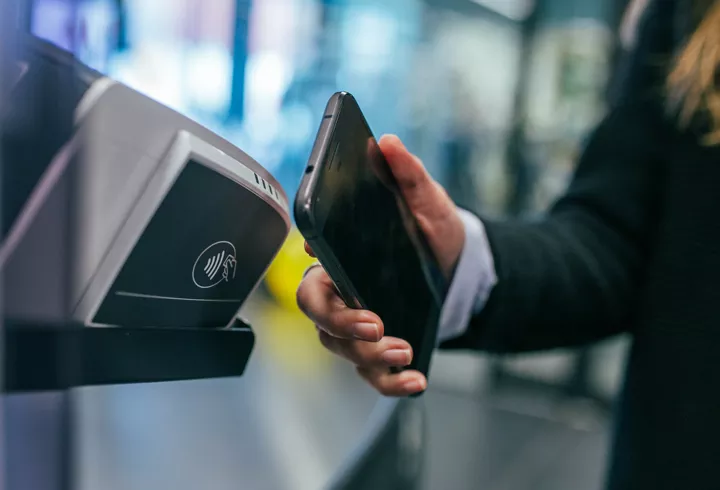In the ever-evolving world of commerce, payment technology has undergone a remarkable transformation. The rise of (AI) Artificial Intelligence and (ML) Machine Learning has paved the way for invisible payments.
With seamless integration into everyday experiences, AI and ML enable frictionless transactions that are virtually invisible to the user.
Invisible payments are shaping the future of AI in e-commerce, providing a glimpse into a world where payments become effortlessly integrated into our daily lives.
The Evolution Of Commerce
Commerce has come a long way from barter systems and cash transactions. Harnessing the power of AI and Machine Learning in e-commerce enables businesses to create seamless experiences for their customers.
However, this was just the beginning. The consumer’s desires for convenience and seamless experience has pushed businesses to innovate further.
By leveraging advanced algorithms and machine learning models, AI can analyze vast amounts of data to understand consumer behavior and preferences.
Ultimately, these technologies revolutionize seamless commerce by providing effortless interactions between consumers and businesses.
Understanding AI Payments
Contactless payments refer to the seamless and frictionless way in which transactions occur, almost unnoticeable to customers.
In this paradigm, AI payments are seamlessly integrated into the shopping experience, removing the need for explicit actions like pulling out a wallet, entering card details, or even scanning the QR code.
Instead, the payment process is transparent and happens in the background, allowing customers to focus solely on their shopping experience.
The Role of AI In Invisible Payments
AI plays a pivotal role in making invisible payments a reality. It enables systems to gather and analyze vast amounts of data in real-time, allowing businesses to understand consumer preferences, behavior, and patterns.
By harnessing this data, AI-powered systems can predict what a customer is likely to purchase and even when they are likely to make that purchase.
This predictive capability enables businesses to constantly charge customer for their purchases without requiring them to manually initiate the payment process
Additionally, AI helps in fraud detection and prevention by identifying unusual payment patterns and alerting the security of transactions but also builds trust among customers.
The Impact of Machine Learning In E-Commerce
Machine Learning complements AI by continuously improving the accuracy of predictions and enhancing the overall user experience.
The ML algorithms, systems can adapt to changing consumer preferences and fine-tune their payment process.
For example, Machine Learning e-commerce can identify trends in customer behavior, such as preferred payment methods or timing, and adjust payment processes accordingly.
ML can also optimize pricing and promotions in real-time, offering customers personalized discounts or incentives to complete a purchase. This not only drives sales but also enhances customer loyalty.
Challenges And Concerns
While the concept of invisible payments holds tremendous promise, it also prevents several challenges and concerns. Security is the primary concern, as the more seamless a payment becomes, the more vulnerable it may be to fraud and cyberattacks.
Businesses must invest in robust security measures to protect customer data and financial transitions. Privacy is another concern, as the collection and use of customer data raise ethical questions
Businesses must strike a balance between personalization and respecting customers’ privacy preferences while implementing digital payment solutions. Regulations like GDPR and CCPA are pushing companies to be more transparent about data usage.
A Quick Recap
Here are some key takeaway(s) about Invisible Payment :
- AI payments provide seamless, frictionless transactions that are integrated into everyday experiences.
- AI and ML analyze consumer data to understand preferences and behavior. This enables predictive capabilities for businesses.
- Machine Learning e-commerce improves accuracy of predictions and personalizes customer experiences.
- AI enables systems to charge customers automatically without requiring manual payment initiation.
- However, security and privacy are major concerns with invisible payments that rely heavily on customer data.
- Examples include Amazon Go stores, Uber’s automated ride payments, and subscription services.
- AI and ML are driving forces enabling invisible payments through predictive algorithms and data analysis.
- Businesses need to innovate while prioritizing security and customer trust.
Invisible payments driven by AI and ML provide convenience but also raise ethical concerns around data usage. Businesses must balance innovation with privacy and security.
Case Studies
To illustrate the power of AI payments, let’s look at couple of case studies :
Amazon Go
Amazon’s cashier-less stores are prime examples of invisible payments. Shoppers enter the store, grab what they want, and simply check out.
Cameras and sensors track item selected, and AI-powered algorithms process payment seamlessly, without the need for a traditional checkout process.
Uber
Uber’s ride-sharing platform demonstrates invisible payments by charging passengers automatically after the ride is completed.
The entire transaction occurs in the background, providing a frictionless experience for users.
Subscription Services
Subscription-based platforms like Netflix, Spotify, and Amazon Prime rely on invisible payments, as users’ subscription fees are automatically deducted from their registered payment methods each month.
Preparing for the Invisible Payments Era
Invisible Payments represent the future of AI e-commerce, offering customers unparalleled convenience and businesses greater insight into consumer behavior.
Using AI and ML in e-commerce are the driving forces behind this transformation, enabling seamless transactions while also presenting challenges that must be addressed.
As we move further into the Invisible Payments era, businesses that prioritize innovation, security, and customer trust will be the ones best positioned to thrive in this new landscape of seamless e-commerce.





